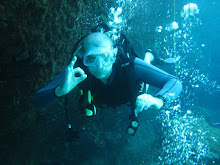I have been working over the last weeks to change how I run, and am realising that it is going to take months to gain any proficiency. I am realising that running is difficult. Playing sports such as football, rugby and tennis may require skills such as hand eye coordination and pace, but running seems just as difficult to master. That doesn't make much sense. You would think how hard can running be, all you do is put one foot in front of the other, the faster you do it the faster you will be. Simple?
If you think about it - running 26.2 miles is much about conserving energy as it is about running. If you have a running style where you bounce along the road thrashing from right to left, all the while hunched over looking at your feet its likely that you are wasting energy. You are likely to be burning as much energy moving vertically (gravity will win) or sideways (the marathon finish line is ahead of you not to the right or left) as you are moving in the direction of travel. Great, so logically the perfect running style will minimise any unnecessary movement. As someone who has limited time, rather than has years to experiment with a technique that will minimise unnecessary movement, are there any shortcuts that can be found?
With this purpose in mind, I have recently read chirunning by Danny Dreyer. Chirunning is a guide for how to run long distances with a technique that is designed to minimise injury. Dreyer's technique strips running back to basics - that's good, the easier to follow the better - but the reader is warned that to run properly can take a lifetime. Dreyer advises that the aspiring runner ought to view a running session as a learning experience. When the runner reaches home he encourages thinking about what went well that can be taken into the next session, and what can be stripped out for the next one. He advises that the runner ought to constantly think about gait or style. As he puts it, an old dog may not be able to learn new tricks, but he can learn anything through repetition. For me, in my early stages of learning this stuff, my repetition is:
- Bring your foot down on the midsole rather than on the heel on on your toes
- Try to bring your foot down directly under your hip - this is meant to reduce pressure on your knees
- Relax your lower legs when running
- Look ahead when running, the other aspects of my technique seem to follow from this point, when I look at my toes the other steps drift off target
I try to check that I am doing these things every few minutes. More often than not I drift back into my hunched heel striking alter ego, but I am aiming for my alter ego to steadily fall away.
In the chirunning technique, running comes from the core muscles. Rather than propelling yourself along with your small lower leg muscles, chirunning encourages the runner to run from the larger core muscles and use the hips and knees as levers.
I am sure there is much more to it that than this, this is early days, I am looking forward to seeing how my technique changes over the coming months.
You can find the chirunning book at the link below:
http://www.amazon.co.uk/Chirunning-Revolutionary-Approach-Effortless-Injury-Free/dp/1847392784/ref=sr_1_1?ie=UTF8&qid=1324407787&sr=8-1
On my ipod this week has been Bon Iver, Bon Iver. I am trying all that I can to avoid Slade, Shakin Stevens, Mr. Blobby or any other Christmas pop song disaster:
http://www.7digital.com/artists/bon-iver/bon-iver/







